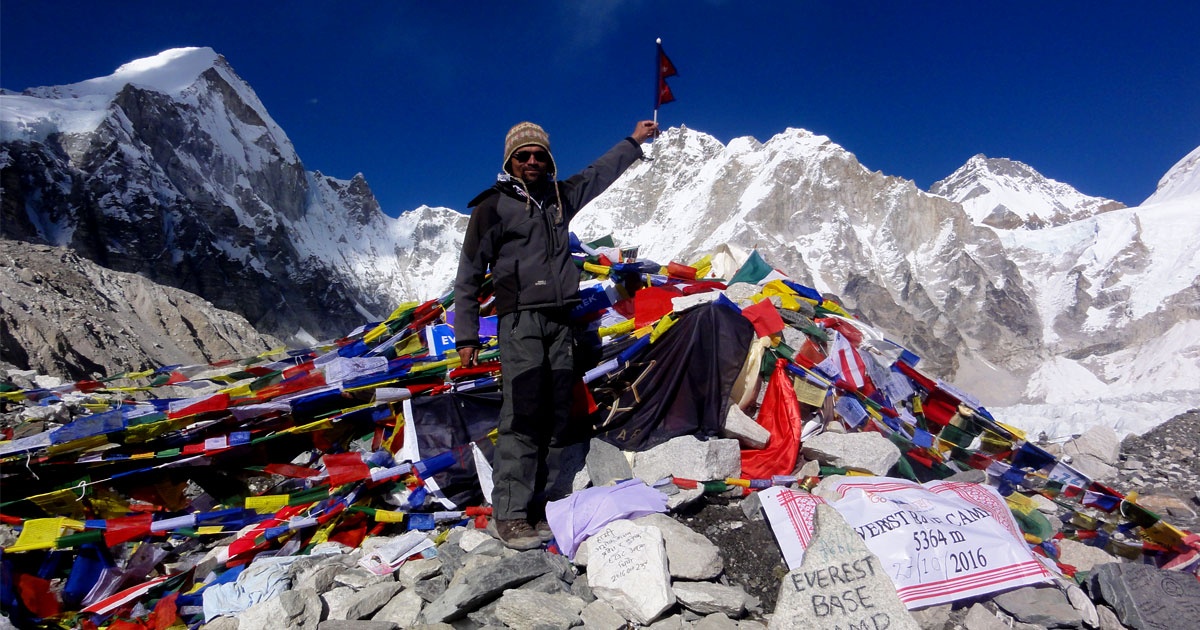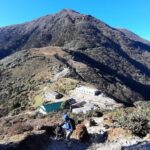The journey to the Everest base camp trek takes you through the magnificent mt everest the world’s highest peaks. Not only that but the journey also takes you through the beautiful natural habitat where different types of plants and animals coexist with the delicate equilibrium of ecology.
Every year many travelers from all around the world visit Nepal to experience the surreal Himalayan region. The Everest Base Camp trek takes you through an array of landscapes, climatic zones, and terrains. As you travel through these areas you will be in the presence of various endangered plant and animal species.
The Everest base camp trails also pass through the Sagarmatha National Park which offers an extraordinary experience in itself. The Sagarmatha National Park is also a UNESCO world heritage site that offers unadulterated beauty to the trekkers. However, the flora and fauna thrive gracefully throughout the Everest base camp trail not just the Sagarmatha National Park.
The plants and animals of the area have evolved and adapted to survive in low oxygen levels and harsh environments. Hence the higher you go the more you will encounter the eternal beauty of the Everest region as traveling throughout the region will take you through the different hues of nature.
The Everest region’s varied geographic distribution and climatic conditions do not prevent it from surprising us with a wide variety of exquisite flora and wildlife. So in this article, we will go through the various plants and animal species that trekkers would be able to see in the habitat of the Everest region so make sure you read until the end.
Flora of the Everest base camp trek
Flora refers to plants that are native to a given area, or environment, and plant life that is typically in that particular area naturally. Although the Everest Region is among the greatest places to be, however, it is uninhabitable for people but numerous beautiful plant species thrive in the region. The flora in the region can endure extreme environments which makes them especially noteworthy. Depending on the height, the Everest trekking zone has a variety of plant species.
Most of them are uncommon plant species found in the Himalayas but some of the plant species also hold medicinal properties that the local ethnic people of the region have been using for generations. These plants mostly comprise herbs, shrubs, and tall trees. Each of these types of plant not only enhances the landscape of the region but also helps the local population along with the birds and animals of the region.
Rhododendron
Rhododendron is the most common type of flora that you will encounter during your Everest base camp trek. This national flower of the nepal is widely scattered throughout the Everest region but it is mainly found in the dense woods of the lower region. This species of plant comes in various shapes and hues usually these hues are pink, red, white, and purple.
The rhododendron is usually a shrub or a small tree but occasionally trekkers might also encounter large rhododendron trees with a maximum height of 20 meters or so. Hence it is one of the most alluring features of the Everest region featuring the decorative landscape of the region.
The vibrant rhododendron trees captivate both the trekkers and specially nature enthusiasts. Hence It is advisable to visit the Everest region in the springtime as it is the blooming season of rhododendron. The plant is well-known for its magnificent springtime displays, which brightly color the hillsides leaving a lasting impression on the trekker’s heart.
Junipers
The junipers are evergreen shrubs that grow in the forests of the Himalayan region. They feature berry-like cones and needle-like leaves which gives them a distinct appearance. The junipers are known for their fragrance and are used to make incense. They are typically found in moderate elevations but are scattered throughout the alpine zones of the region. Hence the trekkers can see these shrubs throughout the region as these plants also thrive in the rocky, dry, and sharp edges of the region.
Junipers are, especially an evergreen shrub but can also get to a maximum height of six meters which is a small tree. The juniper also holds medicinal properties as it is also used for digestive and respiratory-related issues. Not only that but the shrub can also be used to make various culinary delicacies.
Edelweiss
The edelweiss is a small plant that is found especially at high altitudes in arid, rocky conditions of the Everest region. This little flowering plant, which grows in alpine meadows, is well-known for its fuzzy, white petals. This alpine flower also has a symbolic representation as it represents the connection to untamed beauty and purity. The blooming season of the flower is especially monsoon season.
Fauna of the Everest base camp trek
14 days Everest Base Camp trek is a challenging trek in the harsh cold climate with rough and rugged terrains the temperature can go as low as -15 degrees Celsius. However, even in such a low-temperature severe animal species thrive in this region. The region is home to an array of various animal species from common domesticated animal species to rare and endangered species. Although most of these species are especially found in the lower regions of Everest some of the well-adapted fauna are also found in the higher altitudes of the region. Hence the area is filled with many unique and majestic animals that are a part of the vital ecosystem of the Everest region.
Snow leopard
The snow leopard is one of the most unique and magnificent animals of the Everest region. These animals are usually found at high altitudes with cold climatic conditions such as in the Everest region of Nepal. The snow leopard is also one of the highest-living cat species in the world. These big cats can be found at an elevation of somewhere between 3000m to 4500m. These animals boast some prominent features that are unique from the other big cat species. Although they are an apex predator like the other big cats due to the harsh climatic conditions they have adapted and evolved accordingly.
The snow leopard boasts a thick fur with large paws to endure the cold temperature and thick snows of the region. They also have a large nasal path which allows them to thrive in the thin air of high altitudes. Since these are the rare and endangered animal species of the Everest region it might be a rare occasion for trekkers to be in the presence of the snow leopard on their Everest base camp trekking journey.
Himalayan thar
The Himalayan tahr is a mammal found in the alpine and subalpine parts of the Himalayas of the Everest region. These mammals are especially found at an altitude of 16000 ft on the rough and rugged terrains of the region. Since they are native to the Himalayan region they can mostly withstand the cold and harsh temperature of the region. The black facial markings, dark brown coat, and a white beard or typically a goat-like feature is what the Himalayan tahr boasts.
These animals are herbivorous and typically consume grasses bushes and other plants in the alpine habitat of the region. Trekkers can be in the presence of these animals on their Everest base camp trek journey as they graze in a herd, especially during dusk and dawn. Hence observing a herd of Himalayan Tahr grazing is one of the many amazing experiences available in the Everest region.
Red panda
A red panda is a tiny animal with fur that is reddish-brown. They are one of the rare and endangered animal species that can be easily recognized by their bushy, round tail and amber fur. These majestic animals are mostly located in the lower altitude of the Everest region. These creatures, which resemble raccoons, are found in Sagarmatha National Park’s bamboo thickets at lower elevations as bamboo is what they consume the most. As one of the Everest’s pristine fauna. Its endearing qualities add charm to the region. Encountering these creatures is not that easy as these creatures are shy and prefer solitary.
Conclusion
Trekking Everest base camp is Immersing into one of the most breathtaking natural environments on Earth with abundant Himalayan biodiversity. Although the Everest region boasts different climatic zones in different areas it doesn’t disappoint the trekkers with its wide array of flora and fauna. Every species adds something special to the allure of trekking from vibrant floras to unique and majestic faunas there are always surprises to be found. Every step you make through the rough and rugged terrains, lush woods, and alpine meadows you will be in the presence of the beautiful plants and animal species that the region has to offer. Hence Everest region is a place where adaptability and resiliency are expressed in a truly wonderful fashion. So lace up your boots and pack your bags to experience the Himalayan experience in the Everest region of Nepal.



